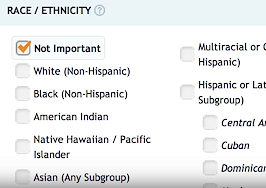It may be a stereotype to say that conservatives prefer suburban McMansions while liberals like urban enclaves, but it’s one that is grounded in reality, according to a report from the Pew Research Center.
The report, “Political Polarization and the American Public,” found that liberals and conservatives differ on more than just politics. Given the choice, three-quarters of those who consistently express conservative views say they would opt to live in a community where “the houses are larger and farther apart, but schools, stores and restaurants are several miles away,” and just 22 percent say they’d choose to live where “the houses are smaller and closer to each other, but schools, stores and restaurants are within walking distance,” Pew said.
Meanwhile, among those who consistently express liberal views, 77 percent would prefer a smaller house in a walkable neighborhood and 21 percent would choose a larger home further away from amenities.
Americans overall are divided nearly evenly on this question with 49 percent preferring the larger houses and 48 percent preferring the more convenient locations, Pew said.
Liberals and conservatives do have some community preferences in common — both groups overwhelmingly say it is important that they live near family, high-quality public schools, and access to the outdoors for hiking, fishing and camping.

But liberals say they would rather live in cities, and conservatives prefer rural areas and small towns. And both groups vote with their feet — liberals concentrate in urban areas while conservatives are more likely to live in rural areas. No group expressed a clear preference for living in the suburbs.
What each group considered important in a community also varied by political ideology. Nearly three-fourths of consistent liberals said it was important to them to live near art museums and theaters, compared with just 23 percent of consistent conservatives.
Consistent liberals were more likely to say racial and ethnic diversity is important in a community than consistent conservatives: 76 percent vs. 20 percent.
Consistent conservatives were more likely to emphasize living near others of the same religious faith compared to consistent liberals: 57 percent vs. 17 percent.









